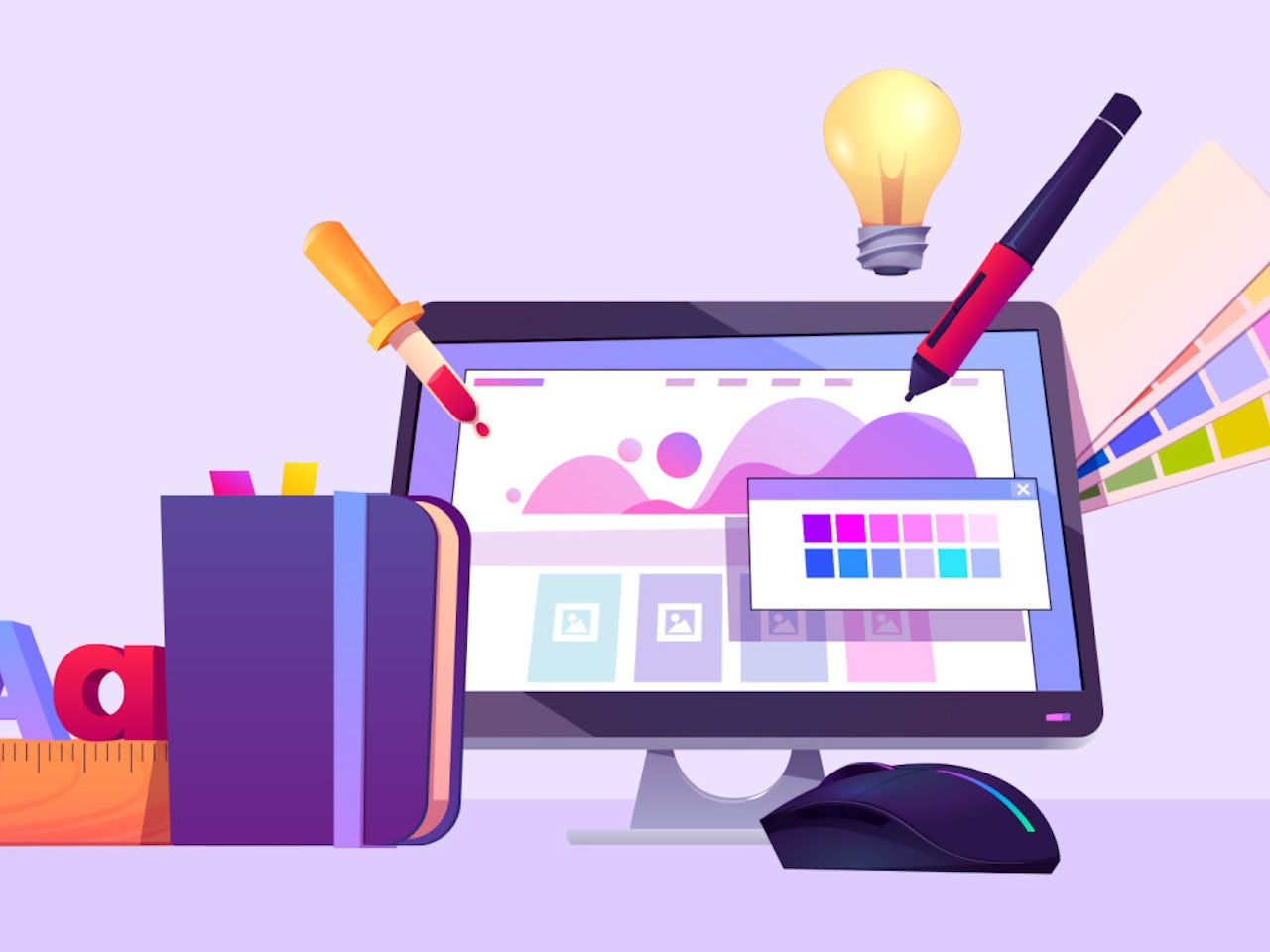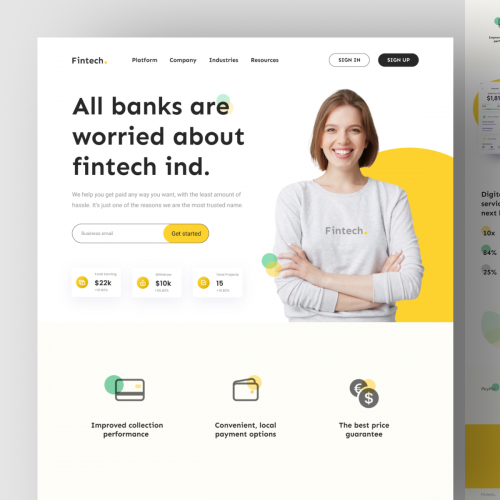Boost Engagement With Ingenious Web Site Layout Solutions
A thoughtfully crafted individual experience, underpinned by strategic aesthetic style and interactive components, can considerably improve user engagement. By checking out different approaches such as responsive style and customized material, services can create a platform that not just astounds users yet additionally cultivates long-lasting commitment.

Understanding Customer Experience
Understanding user experience (UX) is vital for creating effective website style remedies, as it directly influences how users communicate with electronic platforms. An extensive UX technique incorporates numerous components, including usability, user, and ease of access satisfaction, every one of which add to the total efficiency of a site.
To start with, use concentrates on exactly how quickly individuals can browse and locate the info they look for - website design. A well-structured layout, instinctive navigating, and clear contact us to action are basic parts that improve usability. Availability makes sure that all users, consisting of those with handicaps, can effectively connect with the website. This entails designing content that is certified with ease of access criteria and can be quickly accessed utilizing assistive modern technologies.
In addition, comprehending customer characters is necessary for tailoring the experience to fulfill details target market requirements. By conducting customer study and testing, developers can collect insights that inform layout decisions, making certain the site not just meets visual objectives yet also satisfies practical demands. Inevitably, a thoughtful approach to UX style fosters interaction, urges retention, and improves general customer complete satisfaction, which are vital for the success of any kind of electronic platform.
Visual Style Methods
Including efficient aesthetic design approaches is essential for catching individual focus and boosting the total individual experience on a web site. A well-balanced visual hierarchy overviews users via the content, allowing them to quickly soak up and navigate information. This can be achieved with the strategic use typography, color schemes, and spacing, which collectively develop a cohesive and appealing format.
Shade plays an essential role in developing and evoking feelings brand identity. Making use of a well balanced shade scheme that lines up with the brand's principles can cultivate familiarity and trust. Furthermore, integrating top notch images and graphics enhances visual appeal and can dramatically enhance individual involvement.
Whitespace, usually overlooked, is similarly important as it permits web content to take a breath and stops overwhelming users with mess. It assists in much easier analysis and comprehension, causing a much more enjoyable surfing experience.
Last but not least, consistency in layout aspects-- such as switch icons, styles, and typefaces-- ensures a smooth customer trip, enhancing the brand's professionalism and trust. By tactically applying these aesthetic design approaches, websites can not just bring in visitors but additionally urge them to stay longer and engage even more deeply with the web content.
Interactive Elements for Interaction
Involving individuals properly usually depends upon the execution of interactive elements that invite engagement and cultivate a dynamic searching experience. These elements, including tests, surveys, and interactive infographics, motivate customers to proactively get involved rather than passively take in material. By integrating such functions, internet sites can not just capture focus however additionally improve customer retention.

Gamification is an additional effective approach. Integrating game-like elements, such as achievements or benefits for finishing tasks, can transform ordinary communications right into pleasurable experiences. This strategy not just improves involvement yet also urges users to return, developing a faithful audience.
Moreover, interactive elements can promote social sharing, magnifying a website's reach. Attributes like comment sections, share switches, and user-generated content areas foster neighborhood interaction, turning visitors into active individuals. website design. Eventually, the tactical use interactive aspects is important for developing a engaging and engaging internet site that resonates with customers
Responsive and Adaptive Layout
A properly designed site needs to focus on adaptive and responsive style to ensure optimum user experiences throughout a variety of gadgets and screen sizes. Responsive style uses fluid grids and flexible pictures, enabling the format to automatically change based upon the viewer's screen size. This technique ensures that users can easily navigate and engage with the web content, regardless of whether they are utilizing a tablet computer, smartphone, or desktop .
On the other hand, flexible style makes use of predefined formats that are tailored to go to my blog specific device classifications. This implies that the site discovers the type of tool being utilized and serves the appropriate layout, which can improve loading times and optimize the display screen of crucial aspects. While both methods intend to enhance usability, responsive design is frequently preferred for its fluidness and smooth shift in between devices.
Integrating responsive and flexible style not only improves individual complete satisfaction yet likewise positively influences internet search engine rankings. Online search engine prioritize mobile-friendly sites, thus increasing exposure and drawing in even more visitors. Consequently, purchasing these design approaches is vital for organizations wanting to involve their audience efficiently and preserve an one-upmanship in today's electronic landscape.
Analyzing User Feedback and Information
Customer feedback and information analysis are necessary components of reliable site style, as they provide beneficial understandings into user habits and choices. By methodically accumulating and checking out user comments through studies, usability testing, and analytics tools, developers can identify pain points and areas for improvement. This data-driven method makes it possible for companies to fine-tune their website elements, ensuring that the individual experience lines up with audience expectations.
Analyzing metrics such as bounce rates, time on web page, and click-through rates uses a measurable viewpoint on user involvement. These metrics aid developers discern which material reverberates and which areas may call for optimization. A/B screening can be used to assess Go Here variants in style, permitting designers to make enlightened decisions based on individual interactions.
Including individual feedback not just improves website usability yet likewise promotes a sense of area and count on. Involving with individuals with feedback loopholes grows commitment and motivates repeat brows through. Ultimately, leveraging user comments and information evaluation is essential to developing a dynamic, user-centered website that adjusts to developing customer requirements and choices, thereby driving higher interaction and fulfillment.
Conclusion

A thoughtfully crafted user experience, underpinned by critical visual layout and interactive elements, can considerably boost customer interaction.Including efficient visual design techniques is essential for catching customer interest and enhancing the general individual experience on a web site.Individual comments and data analysis are important components of efficient website layout, as they offer beneficial insights into user habits and preferences. Eventually, leveraging individual feedback and information evaluation is integral to creating a dynamic, user-centered website that view it now adjusts to developing user requirements and choices, thus driving higher engagement and contentment.
In verdict, cutting-edge website design solutions significantly improve user interaction by focusing on user experience, utilizing efficient aesthetic strategies, and incorporating interactive aspects.